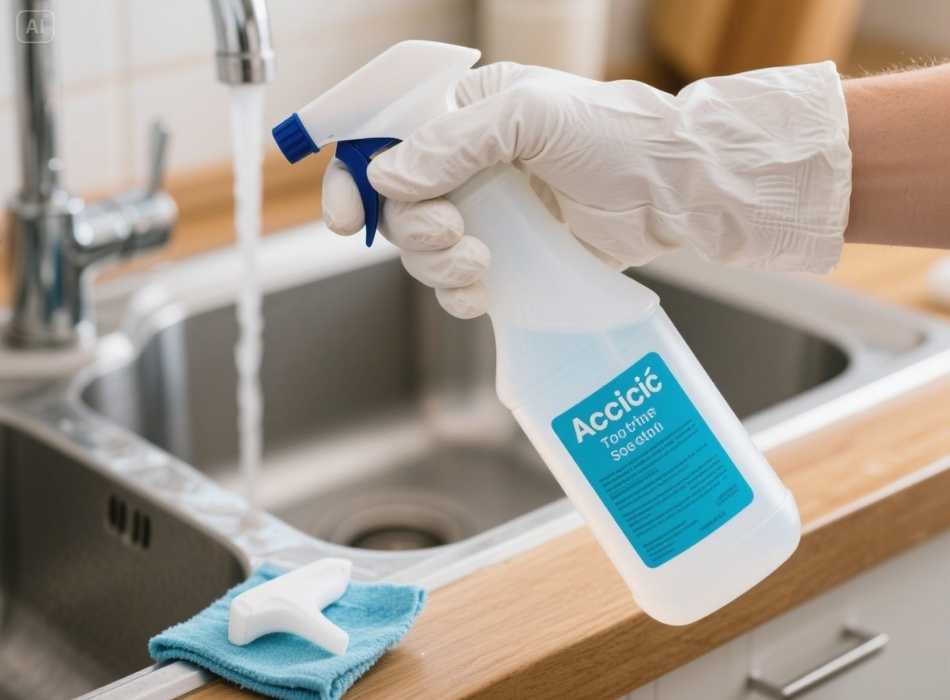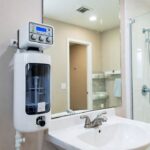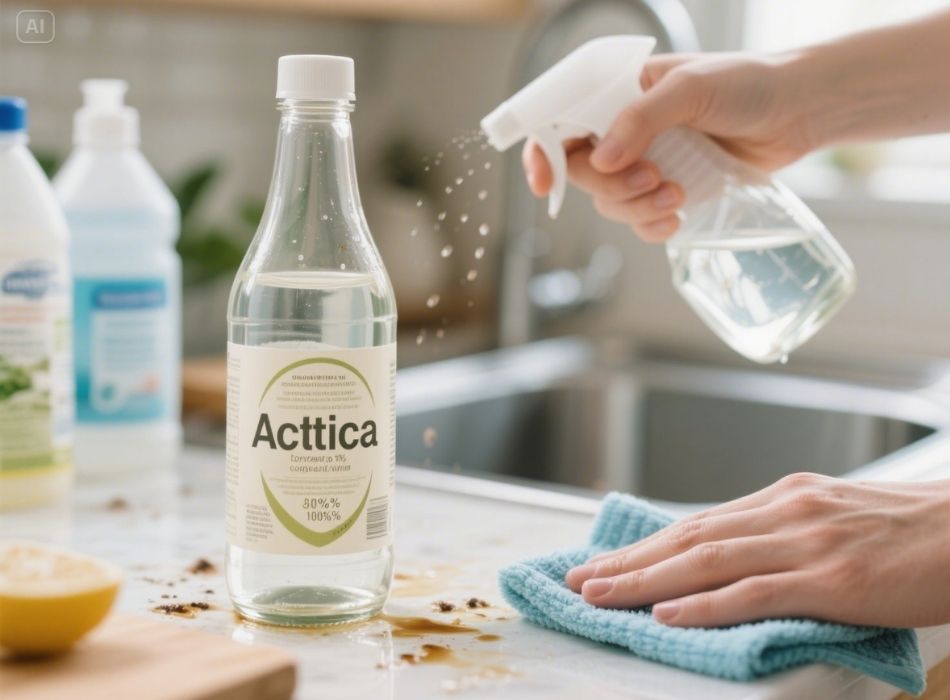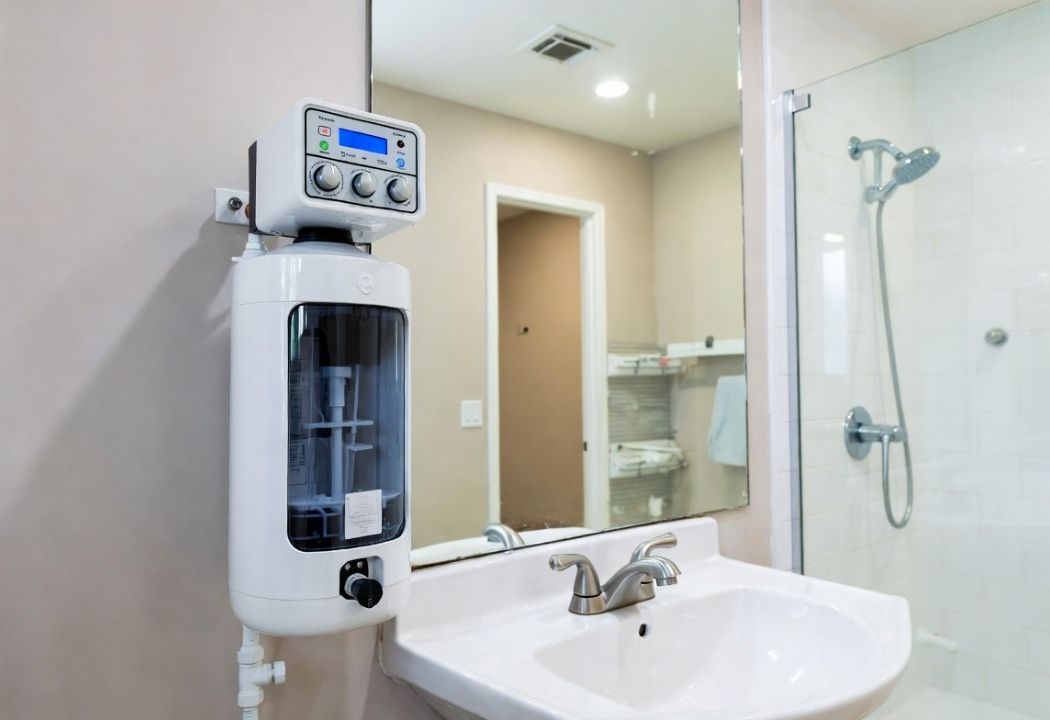Acetic acid, commonly known as the primary component in household vinegar, has been a trusted cleaning agent for generations. Its natural properties, affordability, and versatility make it a staple in homes and industries alike. But when it comes to cleaning effectively and safely, understanding acetic acid concentration is crucial. This comprehensive guide will help you determine the best concentration for cleaning various surfaces and tackle stains, bacteria, and grime effectively.
What is Acetic Acid?

Acetic acid is a chemical compound with the formula CH₃COOH, and it is what gives vinegar its tart taste and strong smell. Naturally derived through the fermentation of ethanol by acetic acid bacteria, it’s an eco-friendly and biodegradable solution.
When we talk about acetic acid concentration in cleaning products, we’re usually referring to the concentration percentage of acetic acid in a liquid solution. For example:
- Distilled white vinegar contains approximately 5% acetic acid.
- Cleaning vinegar can range between 6% and 20% acetic acid, depending on its intended use.
The concentration of acetic acid is directly linked to its cleaning power, but it also determines how and where it can be safely used.
Why Acetic Acid Works for Cleaning
Acetic acid is highly effective as a cleaning agent due to its ability to:
- Break Down Stains and Grime: The acidity dissolves mineral deposits, grease, and dirt.
- Eliminate Odors: It neutralizes unpleasant smells by breaking down odor-causing compounds.
- Kill Bacteria and Mold: Acetic acid has antimicrobial properties, making it effective against certain bacteria, mold, and viruses.
Its natural origins and non-toxic properties make acetic acid a safer alternative to harsh chemicals often found in conventional cleaning products.
Choosing the Right Acetic Acid Concentration for Cleaning

Finding the right concentration of acetic acid is vital to cleaning efficiently while protecting both surfaces and your health. Here’s a breakdown of common acetic acid concentrations and their best uses:
1. 5% Acetic Acid Concentration (Household Vinegar)
This is the standard concentration found in most household white vinegars. It is suitable for:
- Everyday Cleaning Tasks:
- Wiping countertops, kitchen appliances, and sinks.
- Removing light stains from fabrics (always test on a small area first).
- Glass Cleaning:
- Mix equal parts vinegar and water to create an effective streak-free glass cleaner.
- Eliminating Odors:
- A bowl of vinegar left in a room can help neutralize strong smells.
- Limescale Removal:
- Apply undiluted vinegar to mineral deposits on faucets, showerheads, or coffee makers.
2. 6%-10% Acetic Acid Concentration (Cleaning Vinegar)
Cleaning vinegar often has a higher acetic acid concentration than household vinegar, typically around 6%-10%. Its increased strength makes it ideal for:
- Tougher Stains and Build-Up:
- Effectively removes hardened soap scum, grease, and calcium deposits.
- Descaling Appliances:
- Works wonders for dishwashers, kettles, and washing machines.
- Outdoor Cleaning:
- Useful for scrubbing outdoor furniture, grills, and even cleaning patio stones.
Caution: This stronger solution can be more irritating to the skin and eyes, so wear gloves when using it.
3. 15%-20% Acetic Acid Concentration (Industrial/High-Strength Applications)
High-strength vinegar or acetic acid solutions are typically used for industrial-level cleaning or special cases:
- Mold and Mildew Removal:
- Excellent for tackling mold on walls, ceilings, or poorly ventilated areas.
- Weed Killer:
- A powerful, eco-friendly alternative to chemical herbicides, when applied directly to weeds.
- Heavy-Duty Degreasing:
- It can be used in industrial kitchens or garages to dissolve oil and grime.
Caution: Concentrations above 10% can be corrosive to certain surfaces (like metal and finished wood) and harmful if inhaled or handled without proper protection. Always dilute according to the manufacturer’s guidelines.
How to Use Acetic Acid Safely

While acetic acid is generally safer than chemical cleaners, it’s still important to follow safety precautions while using it:
- Dilute When Necessary:
- For most cleaning tasks, diluted solutions are sufficient and safer for use.
- Wear Gloves:
- Higher concentrations can irritate the skin, so gloves are recommended for anything above 5%.
- Protect Surfaces:
- Avoid using acetic acid on natural stone surfaces (e.g., granite and marble) and unsealed wood, as it can damage them.
- Avoid Mixing with Bleach:
- Never mix vinegar (acetic acid) with bleach or other cleaning chemicals; it can release toxic gases.
- Test in a Small Area:
- Before using acetic acid solutions on fabrics or delicate surfaces, apply a small amount to a hidden spot to ensure it won’t cause discoloration or damage.
- Ventilation is Key:
- When using high-strength acetic acid solutions, make sure the area is well-ventilated to avoid inhalation of strong fumes.
DIY Acetic Acid Cleaning Recipes

For those who love eco-friendly, DIY cleaning solutions, here are some easy recipes:
All-Purpose Cleaner
- 1 cup of white vinegar (5% acetic acid)
- 1 cup of water
- 5-10 drops of essential oil (optional)
Mix the ingredients in a spray bottle, and enjoy an affordable, all-purpose cleaner for most surfaces.
Shower Cleaner
- 1 cup of cleaning vinegar (6%-10% acetic acid)
- 1/2 cup of dish soap
Combine in a spray bottle and spray on soap scum and tiles. Leave for a few minutes, then scrub and rinse.
Carpet Stain Remover
- 1/4 cup of white vinegar (5% acetic acid)
- 1/4 cup of water
- 1 tbsp of baking soda
- 1 tsp of dish soap
Apply to carpet stains, scrub lightly, and blot with a cloth.
Why Acetic Acid is an Eco-Friendly Alternative
Many commercial cleaning products are packed with harmful chemicals that can damage the environment when washed down the drain. Acetic acid, on the other hand:
- Breaks down easily in the environment.
- Produces fewer harmful residues.
- Reduces dependency on synthetic chemicals.
By switching to vinegar-based cleaning solutions, you’re taking a step toward a greener planet.
Take the Clean, Conscious Route
Choosing the right acetic acid concentration for your cleaning needs ensures effective results and peace of mind. Whether you’re tackling everyday messes with household vinegar or taking on tough stains with cleaning vinegar, this versatile solution is a must-have for your home.
Remember, safety comes first, especially at higher concentrations. Always follow precautions, and don’t forget to share your experiences with fellow DIY cleaning enthusiasts!











